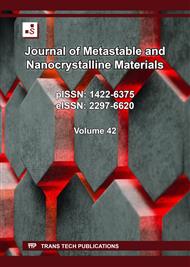p.1
p.9
p.27
p.35
p.45
p.57
p.67
Analysis of Spin Spin Relaxation Time Values of Gelatin as a Tissue Mimicking Material Using Quantitative T2 MRI
Abstract:
This study observed the properties of gelatin as tissue-mimicking materials for quality assessment of image quality in the quantitative T2 MRI method. Images for spin-spin relaxation time (T2) measurement were acquired using MRI 3 Tesla system. T2 values were measured by acquiring T2 images from gelatin samples as tissue-mimicking materials with five different concentrations: 10%, 15%, 20%, 25%, and 30%. The decay rate of signal intensity values over various echo-time (TE) was used to plot an exponential graph for T2 values, with spin-spin relaxation rate (R2) as the reciprocal of T2. The signal intensities and T2 values were observed to determine the relation between gelatin concentration and those parameters. The gelatin concentration is inversely proportional to T2 value, but no relation is found between gelatin concentration and signal intensity. The result shows that gelatin concentration of 30% has potential for tissue-mimicking materials for white matter and spinal cord. This study is potentially developed for further studies of tissue-mimicking materials for phantom development in quantitative MRI.
Info:
Periodical:
Pages:
67-72
Citation:
Online since:
November 2025
Price:
Сopyright:
© 2025 Trans Tech Publications Ltd. All Rights Reserved
Share:
Citation:


